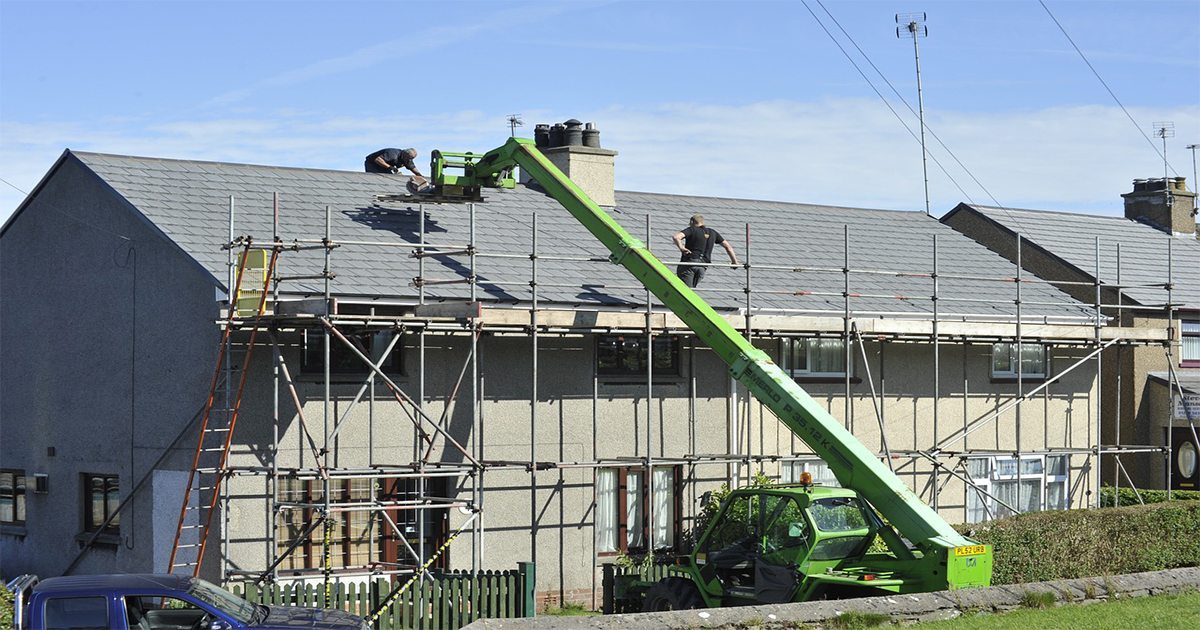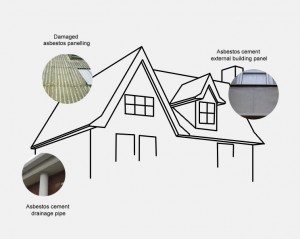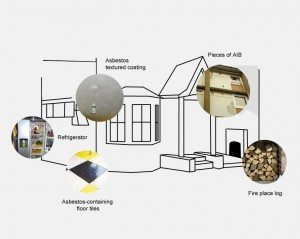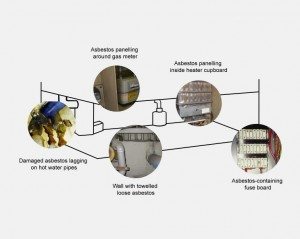Asbestos in Homes

When was Asbestos Used in Homes
Asbestos is the name given to a number of naturally occurring, fibrous silicate minerals mined for their useful properties such as thermal insulation, chemical and thermal stability, and high tensile strength.
Asbestos was commonly used in building materials. Many products are still in place today contain asbestos,” according to the Environmental Protection Agency.
There is no safe level of exposure to asbestos, according to the EPA and the Department of Health and Human Services.
Asbestos is a known carcinogen and is the only known cause of mesothelioma. This serious cancer is caused by breathing in or ingesting asbestos fibers, which become lodged in the thin membrane that lines and encases the lungs and abdominal cavity.
One source of asbestos exposure often overlooked is in the home. If the house was built prior to the 1980s, it was likely built with some asbestos-containing materials.
It is possible to be exposed to asbestos in your house when you undertake do-it-yourself renovation projects or as the result of wind, rain or storm damage to the house.
If you or a loved one has been diagnosed with mesothelioma, contact us to learn about your legal options for pursuing compensation.
Asbestos-Containing Products in the Home
Asbestos was a common component of many building materials through the 1980s, and these dangerous materials can still be found in houses and apartment buildings throughout the United States.
Do-it-yourself homeowners and professionals who are renovating or performing work on older homes may be exposed to deadly asbestos fibers if they work with or disturb the following materials:

- Cement roofing and siding shingles
- House Insulation in homes built between 1930 and 1950
- Textured paint and in patching compounds used on wall and ceiling joints
- Artificial ashes and embers sold for use in gas-fired fireplaces
- Older products such as stove-top pads
- Walls and floors around wood burning stoves may be protected with asbestos paper, millboard, or cement sheets
- Some vinyl floor tiles, and the backing on vinyl sheet flooring and adhesives

- Hot water and steam pipes in older houses with an asbestos material or covered with an asbestos blanket or tape
- Asbestos insulation for oil and coal furnaces and door gaskets
- Boilers
In addition, the National Safety Council warns of asbestos found in:
- Soundproofing or decorative material
- Automobile brake pads, linings, clutch facings, and gaskets
The presence of asbestos-containing materials in a home is not hazardous unless the material becomes damaged.

Damaged, deteriorating, or friable asbestos that becomes dry and crumbles into a powder may release asbestos fibers into the air that can be inhaled and can pose a health risk for the residents.
Professional testing is recommended to determine whether materials in your home contain asbestos.
Homeowners should never try to repair or remove asbestos-containing materials on their own.
Disturbing these materials could release microscopic asbestos fibers into the air, putting anyone who inhales these fibers at risk of developing a debilitating asbestos-related disease such as mesothelioma.
Limiting Asbestos Exposure
There are several ways a person can become exposed to asbestos, according to a Canadian Environmental Law Association report, when renovating a home, including:
- Disturbing loose-fill insulation and ripping away hot water tank insulation
- Removing roof shingles or siding
- Sanding or scraping asbestos floor or ceiling tiles
- Sanding plaster or coatings, such as roofing compounds, sealants, paint, putty caulking and drywall products that contain asbestos
During home renovation projects, work often involves cutting, scraping and sanding that can quickly damage asbestos-containing materials.
The dust generated by these processes can travel throughout the house and remain airborne for weeks where it can be breathed in by the residents.
If you plan on repairing, renovating or remodeling your home, and if you are in the U.S. and your house was built prior to 1980, have your house tested for asbestos.
If your home does have asbestos-containing materials that are not damaged and have not been disturbed, your family should be safe from inhaling fibers.
However, if the asbestos has been compromised and is damaged, you may need to hire professionals to conduct the work.
Managing Storage Areas
When retrieving stored items from an attic or basement, sometimes for many years, water damage and deteriorating house insulation is often discovered.
Attics and basements are the main areas where asbestos-containing insulation was used.
The water damage and years of deterioration might cause the asbestos fibers to be exposed, so when moving boxes or items in and out of these areas in the home, it might cause the exposed asbestos fibers to become airborne and you will be at risk of inhaling or swallowing these particles.
Do not disturb the materials, if possible. The US Environmental Protection Agency recommends:
- Limiting the number of times you go in and out of the area.
- Keep children out
- Placing the boxes on a moistened towel, and wiping down the items with a wet towel or sponge, to prevent the fibers from becoming airborne.
- Cleaning the area with wet cloths only – do not sweep or vacuum as this will stir up the fibers.
If there is damage in the area, check with a local asbestos abatement company to determine if work should be done to contain the area.
Asbestos in the Garage
As noted by the National Safety Council, brakes, clutches and other car parts were once built with asbestos-containing products.
Individuals who work on their vehicles in their home garage may be at risk for inhaling asbestos fibers.
It is not possible to determine whether brake or clutch components contain asbestos simply by looking at them, but some vehicles and parts may contain labels indicating whether those components contain asbestos.
The Occupational Safety and Health Administration states that mechanics should assume all brakes have asbestos-type shoes.
For most mechanics, instead of blowing dust out when working on brakes and clutches, using a wet cloth to remove the dust should be an effective method for preventing asbestos fibers from becoming airborne.
If you are a mechanic working in a commercial garage, follow the safety guidelines of the business to prevent asbestos exposure. Contact your local EPA office for more information about safety in your home.
Compensation for Asbestos Diseases
Those who were exposed to asbestos, either in their own home or through work on other people’s homes, can develop mesothelioma and other asbestos diseases decades later.
If you or a loved one has been diagnosed with an asbestos disease, you may be entitled to compensation from the asbestos companies that failed to warn of the danger of their product.
Contact us today to learn about your legal options.
Legal Help for Asbestos Diseases
If you or a loved one has been diagnosed with mesothelioma after being exposed to asbestos in the home, at work, or while serving in the military, you should seek legal advice immediately.
You are entitled to compensation from the asbestos companies that are responsible for putting you and your family at risk.
Contact us today to learn more about your legal options.
Sources & Author:
- Agency for Toxic Substances and Disease Registry
- Canadian Environmental Law Association – Asbestos FAQs
- Consumer Product Safety Commission – Asbestos In The Home
- U.S. Environmental Protection Agency
